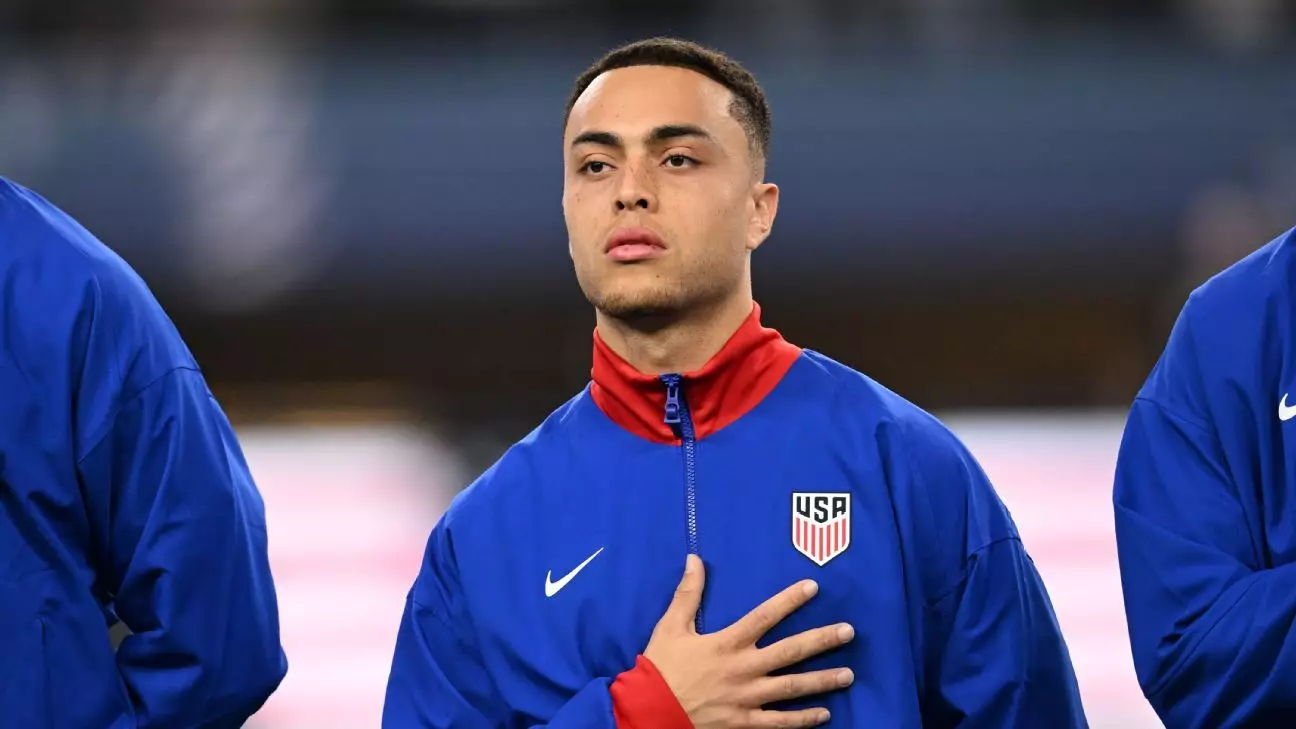As the U.S. Men’s National Team gears up for the Concacaf Gold Cup, they find themselves navigating a landscape rife with player absences. The recent withdrawal of Sergiño Dest, a key defender currently with PSV Eindhoven, adds yet another layer of complexity to manager Mauricio Pochettino’s preparations. Dest is part of a growing list of notable players — including Christian Pulisic and Antonee Robinson — who will miss out due to exhaustion and injury, respectively. This series of withdrawals not only disrupts the team chemistry but also limits the tactical options available to Pochettino, who must now realign his strategies around a slightly less experienced roster.
Dest’s exit from the tournament is a notable blow, especially considering he recently returned from a torn ACL that had sidelined him for a significant part of his season. The decision to prioritize his long-term fitness demonstrates a commitment to player welfare, but it also raises questions about the readiness of the current squad. Pochettino’s focus on individual recovery programs showcases a proactive approach, although the timing could not be more precarious nor the stakes any higher.
A Shift Toward Youth and New Faces
In the wake of these withdrawals, Pochettino is turning to fresh talent and lesser-known players, marking a strategic pivot as the U.S. aims for tournament victory. This Gold Cup roster shows a blend of established veterans like Tyler Adams and Matt Turner, alongside newcomers such as Alex Freeman and Quinn Sullivan. These youngsters are expected to take the field with vigor, despite their relative inexperience. Freeman, in particular, brings a compelling storyline as the son of NFL great Antonio Freeman, illustrating how sports lineage can often weave into the fabric of athletic achievement.
Moreover, Pochettino’s decision to include dual-national Damion Downs speaks to the team’s broader strategy of enriching its talent pool. Downs represents an intriguing asset; having spent time in both Texas and Germany, he brings a unique blend of experience and perspective, which is increasingly valuable in today’s globalized soccer arena.
Sibling Dynamics and Historic Opportunities
The presence of brothers Brenden and Paxten Aaronson on the roster is another fascinating aspect of this year’s squad. Their selection symbolizes a significant milestone in U.S. soccer history, as they become just the second set of brothers to be called up for official competition. The camaraderie and competitive spirit that brothers inherently share have the potential to foster a unique synergy on the field, enriching the team’s dynamics during critical matches.
Their situation speaks volumes about the evolution of American soccer, which has seen increasing familial ties being leveraged for enhanced team synergy. The implications of the Aaronson brothers’ connection could serve to cultivate a sense of unity among a squad that is confronting the pressure of competing at a high level amidst an array of challenges.
Eyes on the Prize: The Road Ahead
As preparations ramp up, the U.S. will take on friendlies against Turkey and Switzerland. These games are critical for fine-tuning the team’s tactics and building cohesion among the newer players. The opening match against Trinidad and Tobago on June 15 will surely set the tone for the tournament. Given the current state of the roster, every match offers not only a chance for victory but also an opportunity to instill confidence in untested players, who may find themselves thrust into pivotal roles unexpectedly.
In these moments of adversity, the U.S. Men’s National Team has an opportunity to redefine its identity. The road to the Gold Cup will not merely be a quest for a trophy; it’s a transformative journey for emerging talent and a chance to harness resilience in the face of uncertainty. In doing so, Pochettino and his players can cement the fundamentals of a stronger, more adaptable U.S. soccer ethos for the future.


Leave a Reply